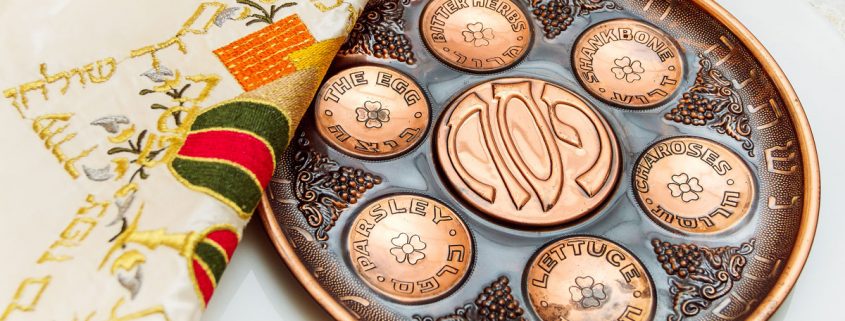The Story of the Seder Plate
Does your family keep heirlooms? No matter if you’re rich or poor, the chances are that somewhere, hidden in an attic or a drawer, there is an object from another generation that has somehow passed into your family’s possession. It could be a photograph. It could be a book. It could be a candlestick. From time to time, you might look at it and say, “If only it could talk. What a story it could tell!”
The Passover Seder plate is a little like that – for the story it tells is the story of the Jewish people. And the Seder plate is a silent witness of the finished work of Jesus the Messiah.
Passover in History
The Seder plate occupies center stage at the Passover meal. It has the Karpas (parsley), the Maror (bitter herbs), the Charoset (apples, nuts, spices), the Z’roah (lamb shankbone) and the Beitzah (egg). But a look at Scripture shows us that Passover started out a bit more simply.
The first Passover, in Exodus 12, mentions three essentials: the Passover lamb, bitter herbs and unleavened bread (Exodus 12:8). So where did the rest of the elements on the Seder plate come from-and when did they get there?
The answer lies with the forces of history and the God-given ability of the Jewish people to keep their heritage alive, even as they reshaped traditions as need dictated. The historical event that most greatly altered the celebration of the Passover was the destruction of the Temple in 586 BC. Why? Because from that day until the time of rebuilding under Ezra and Nehemiah, the sacrifice of the lamb could not be offered in Jerusalem.
This meant that the central event of the Passover-the sacrifice-was taken away. What had been an actual event must now be preserved as a memory, complete with the illustrations embodied in the elements of the Seder that had not been there before.
Passover in Jewish Sacred Literature
The earliest mention of the Passover Seder as we know it today comes in the Mishnah, the written version of the Jewish Oral Law, which was compiled by Judah Ha Nasi (the Prince) in the second century. In the tractate Pesahim, we meet familiar elements of today’s Passover, such as the four cups, the greens for dipping, the charoset, the Four Questions, the sayings of Rabbi Gamaliel and the well-known prayers and psalms that are recited and sung to this very day. However, although these things were written down in the second century, they are in fact far older-possibly by hundreds of years.
The great Jewish sage, Moses ben Maimon (Maimonides) codified much Jewish practice in the 11th century, and Joseph Karo, another towering scholar in the Jewish faith, authored the Shulchan Aruch (“Prepared Table”), which was printed in 1565. It is the basis for the order of the traditional Passover celebration today.
The Seder Plate in Art
As with many other Jewish festivals and observances, the artistic impulse plays an important and edifying role in the ritual articles associated with the Passover. However, prior to the Renaissance there are no examples of the beautifully fashioned Seder plates we find today.
The first we hear of something resembling the Seder plate is a basket called a Ke’arah in 1000 AD. However, starting in the 16th century in Spain and Italy, we find beautiful Seder plates made of such materials as wood, porcelain and copper.
The Passover Egg – Sacrifice and Resurrection
One of the most intriguing elements of the Seder plate is the Beitzah (egg). Although no one knows how it came to be placed on the Seder plate, the egg became to Israel another symbol of sacrifice in place of the slaughtered lamb. Yet, while the emphasis on sacrifice has always called us to remember the shedding of blood for atonement, the symbol of the egg calls us to consider the newness of life made possible by the sacrifice.
Curiously enough, this interpretation found its way into the Church from almost its earliest days. Easter eggs were at one time called Pasche eggs, which hearkened back to the original connection between the Passover and Messiah’s resurrection.
Messiah and the Passover Plate
The Seder plate has all of the elements of Messiah’s life: suffering, sacrifice and resurrection. It tells the story not only of the Israelites’ exodus from slavery in Egypt into the freedom of the Promised Land, but also of our exodus from the bondage of sin unto everlasting life.
In Messiah, we find gloriously fulfilled the things toward which the Seder plate has pointed all along. In Him, the Passover celebration becomes a banquet at which the King of Creation is praised and worshiped and joy is heaped upon joy forever.



